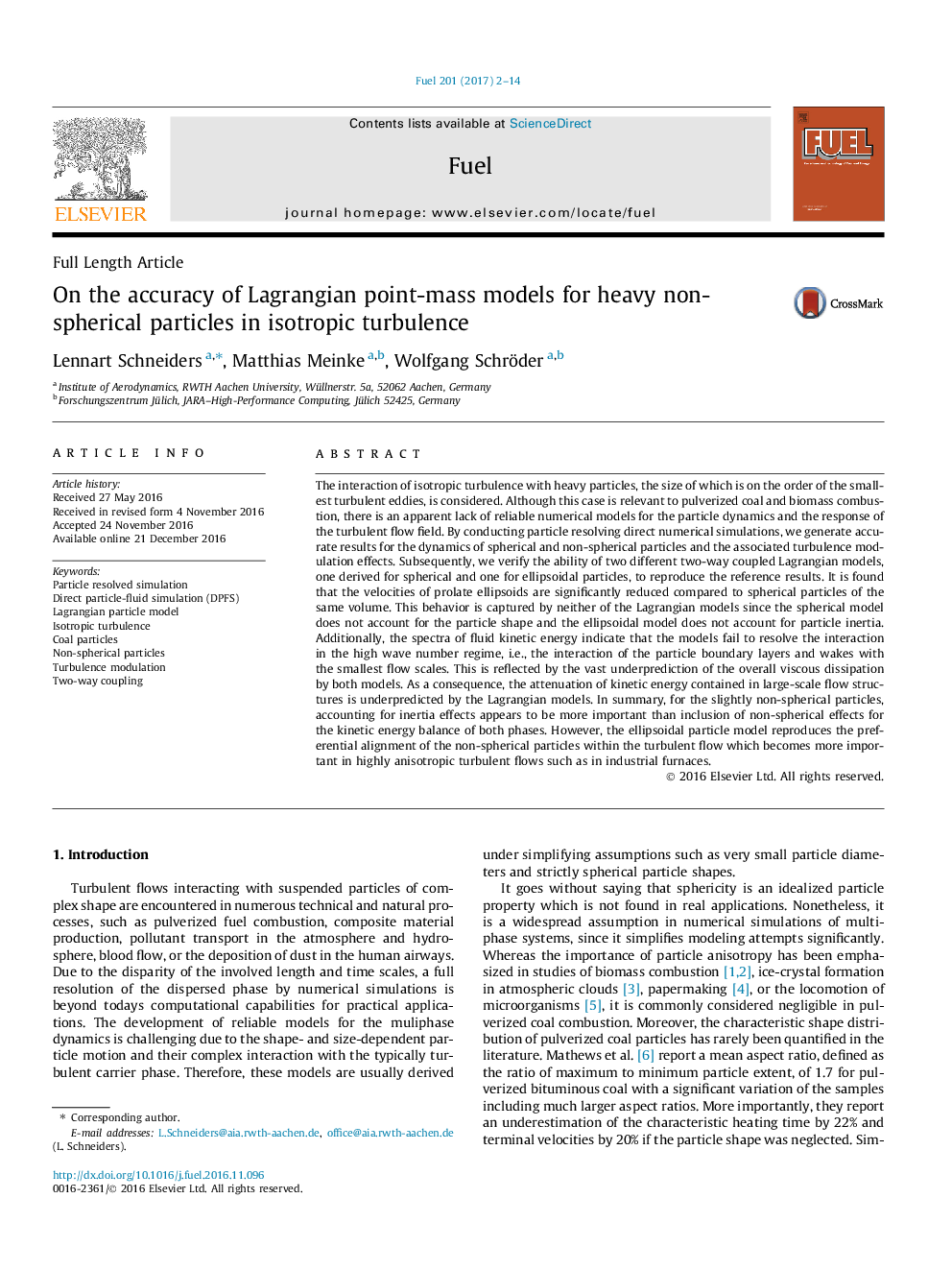| Article ID | Journal | Published Year | Pages | File Type |
|---|---|---|---|---|
| 6473646 | Fuel | 2017 | 13 Pages |
The interaction of isotropic turbulence with heavy particles, the size of which is on the order of the smallest turbulent eddies, is considered. Although this case is relevant to pulverized coal and biomass combustion, there is an apparent lack of reliable numerical models for the particle dynamics and the response of the turbulent flow field. By conducting particle resolving direct numerical simulations, we generate accurate results for the dynamics of spherical and non-spherical particles and the associated turbulence modulation effects. Subsequently, we verify the ability of two different two-way coupled Lagrangian models, one derived for spherical and one for ellipsoidal particles, to reproduce the reference results. It is found that the velocities of prolate ellipsoids are significantly reduced compared to spherical particles of the same volume. This behavior is captured by neither of the Lagrangian models since the spherical model does not account for the particle shape and the ellipsoidal model does not account for particle inertia. Additionally, the spectra of fluid kinetic energy indicate that the models fail to resolve the interaction in the high wave number regime, i.e., the interaction of the particle boundary layers and wakes with the smallest flow scales. This is reflected by the vast underprediction of the overall viscous dissipation by both models. As a consequence, the attenuation of kinetic energy contained in large-scale flow structures is underpredicted by the Lagrangian models. In summary, for the slightly non-spherical particles, accounting for inertia effects appears to be more important than inclusion of non-spherical effects for the kinetic energy balance of both phases. However, the ellipsoidal particle model reproduces the preferential alignment of the non-spherical particles within the turbulent flow which becomes more important in highly anisotropic turbulent flows such as in industrial furnaces.
